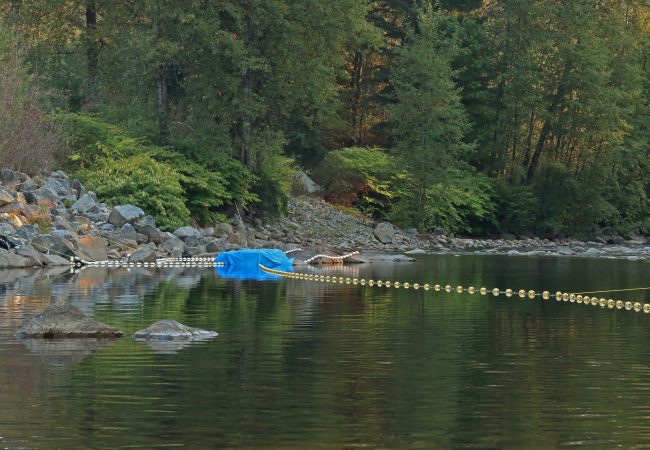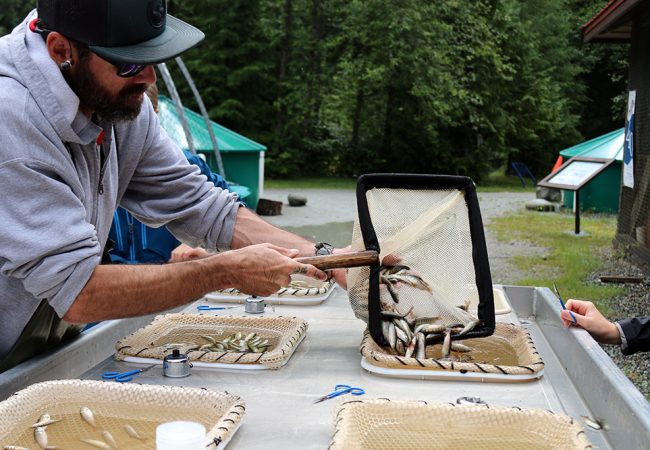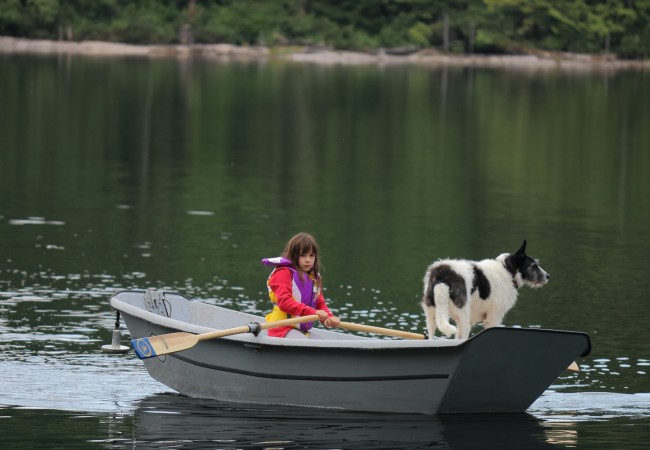Back in September, 2016, we wrote about how there was…
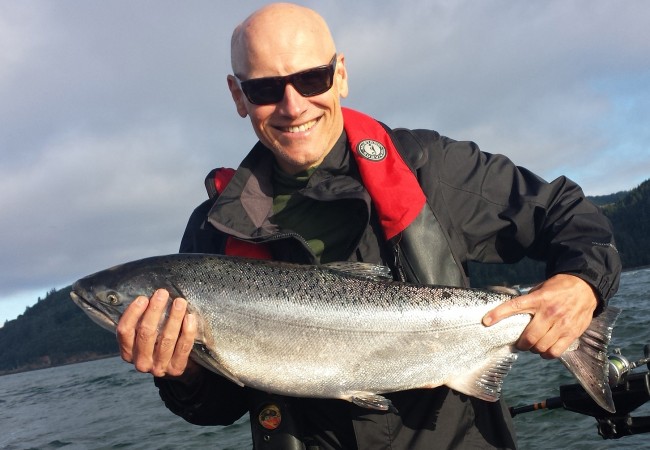
The Columbia River Fall Chinook: We Have Good News, and We Have Bad News
There was a time when the great runs of the Columbia River’s fall chinook seemed in peril. Some of the worst years occurred in the 80s and 90s, when fish counts at Bonneville Dam held mostly below 200,000. The worst years were 1983, with just 112,400 fish crossing the ladders and 1992 with only 116,200.*
By sharp contrast, counts since 2010 have averaged well above 500,000, with over 950,000 in 2013 (a record year) and nearly 855,000 in 2014. The Columbia River 2015 fall salmon forecast indicates the run may rank as the third highest since records began in 1938.
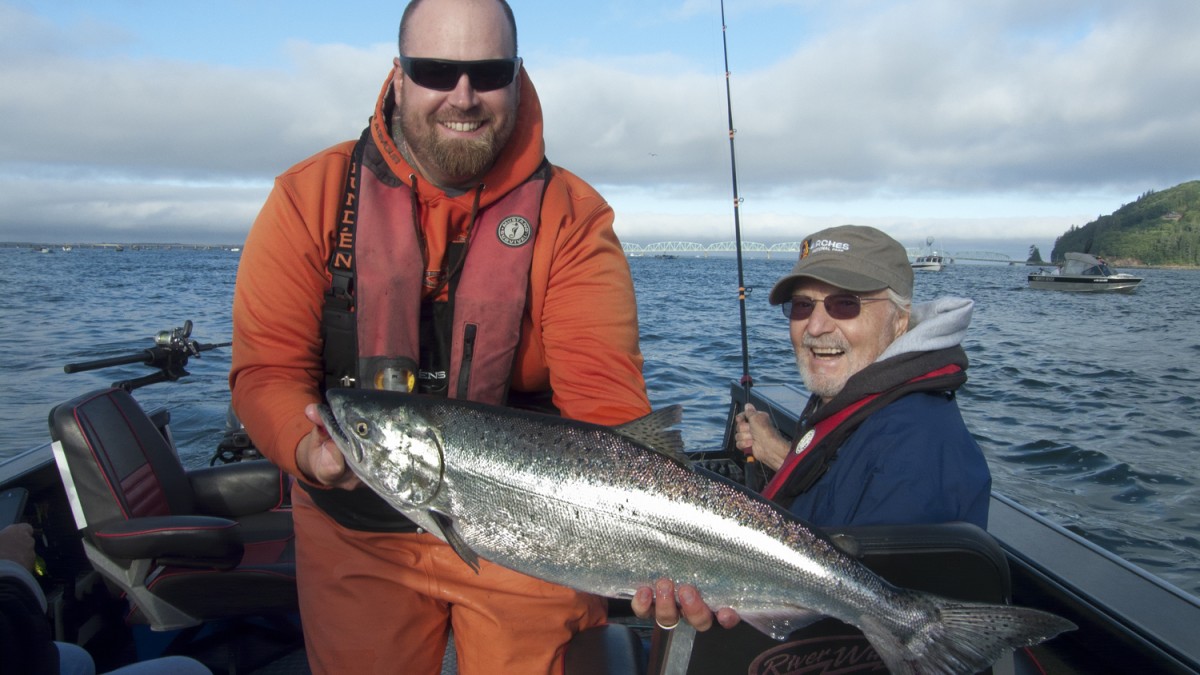
Fishing guide Dustin Stansbury of St. Helens holds a mint-bright fall chinook taken near the Astoria bridge in early August.
“When it comes to the fall chinook,” says Columbia River guide Dustin Stansbury, “these are the ‘good old days.’ People like to talk about how fishing used to be so much better. Well, that’s just not true.”
Unfortunately, the “good old days” may be coming to an end due to climate change and the severe drought now gripping the Pacific Northwest. High water temps and low water levels will surely put a dent in future salmon returns. Perhaps a very big dent. But more about that in a minute.
We fished with Dustin out of Astoria in early August. The action was good from nearly the moment we dropped our lines in the water until late morning, when the bite abruptly stopped. Everyone hooked fish, and all four of us tagged and took home our one permitted chinook.
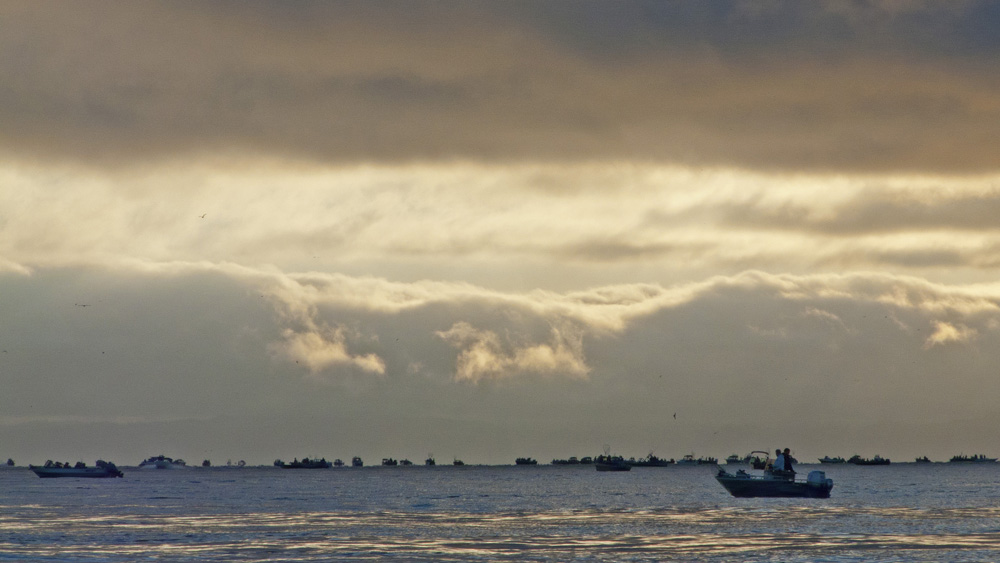
Summer madness on the Columbia near Astoria. That’s not the shore in the background…those are fishing boats. Many, many fishing boats.
These tight regulations and are just one reason for the health of the Columbia’s fall run. Dam and fish ladder improvements, better hatchery management (including using genetic stock to minimize impact on wild populations), better management of water levels and favorable ocean conditions have all contributed to improving returns.
On the other hand, the 2015 drought could put all that hard work in jeopardy, at least for this year’s run. We cruised the Columbia near St. Helens on the weekend of August 8 and 9, and the water temperature hovered around 70 degrees. That’s a borderline survival temperature for the hardy chinook.
Sockeye salmon, which need cooler water, are suffering severely with major die-offs occurring upstream where temperatures have hit 72 degrees. If we don’t get rain and cooler weather in August and September, all the 2015 salmon runs in the Columbia will suffer or perhaps face outright devastation.
The strong fall chinook run is heartening news, but it’s only one of the Columbia’s many anadromous fish runs. Currently 13 distinct populations of salmon are at risk in the Columbia and Snake rivers. These are fish listed as threatened or endangered under the federal Endangered Species Act. This is not the time for a drought.
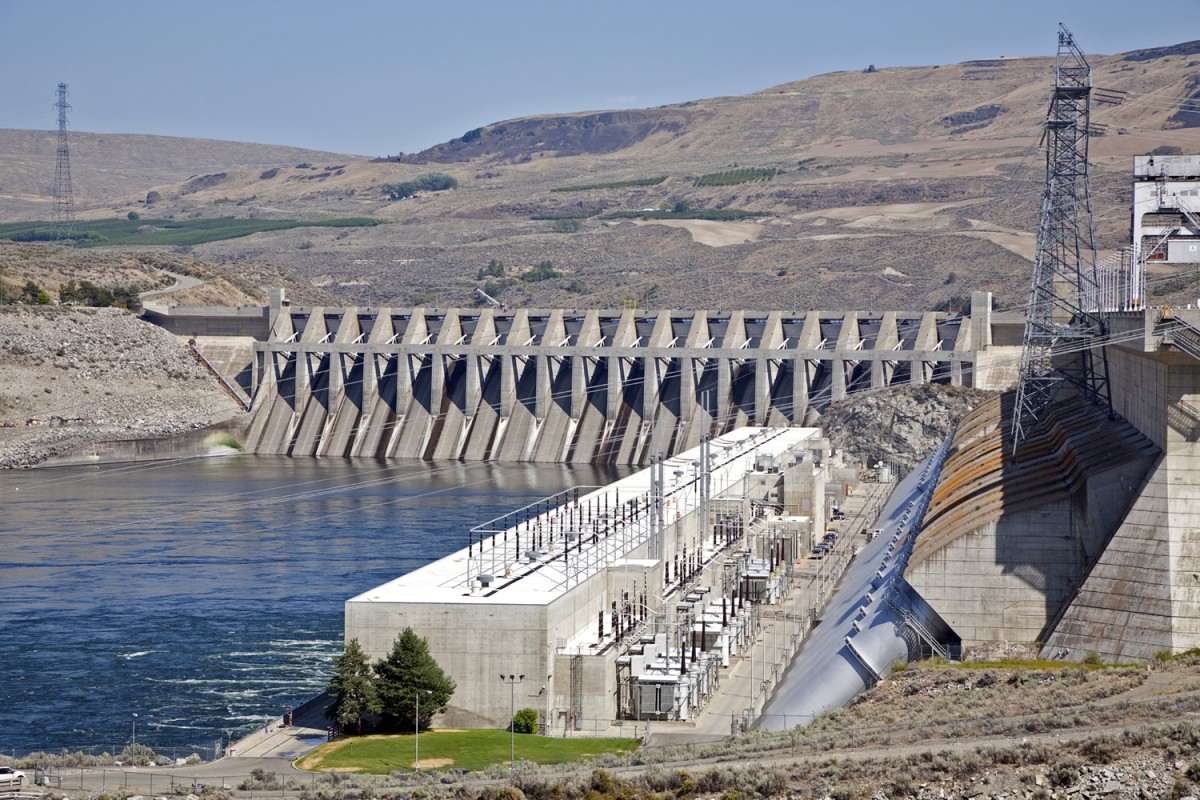
The end of the line for the Columbia’s salmon and steelhead: Chief Joseph dam in north-central Washington has no fish ladders.
The imposing series of dams–11 on the Columbia River in Washington and Oregon and 19 on the Snake river in Oregon and Idaho–have had by far the biggest impact on the Columbia’s salmon and steelhead runs. The Chief Joseph dam on the Columbia in central Washington doesn’t even have fish ladders. So the fish go no further upstream. Dams have blocked more than 55 percent of the spawning and rearing habitat once available to salmon and steelhead in the Columbia River Basin.
The dams create a number of problems for migrating fish, both upstream and downstream. Upstream fish must negotiate the ladders as well as fluctuating water levels and slow water in the huge pools behind the dams that can become too warm for fish survival. This year, the water in these pools has reached toxic temperatures well above 70 degrees.
Downstream juvenile fish face more difficult obstacles, primarily surviving a plunge through the turbines that generate power. New efforts are making the turbines safer for fish passage, and juvenile survival has improved dramatically. But a lot of young fish still die.
Overall, there may be little to cheer about with this year’s boom fall chinook run. While the fishing is good and the fish numbers are high today, climate change means the salmon face a very uncertain future tomorrow.
* Fish passage statistics from the U.S. Army Corps of Engineers and NOAA Fisheries, as reported by the Fish Passage Center website.
Photo of Chief Joseph Dam from iStock.

